Matt Moore's Blog, page 11
November 26, 2013
Touch the Sky, Embrace the Dark: Why I Wrote… (Part 1)
Every story has a story behind it. So to give you a small glimpse into the stories in Touch the Sky, Embrace the Dark here are the influences, the ideas or the inspirations for each of these stories. I hope by learning a little more about them you’ll appreciate them even more.
Here are the first five stories in the collection. Tomorrow, I will write about the remaining five. And if you missed it, yesterday I wrote about 10.5 cool tidbits about Touch the Sky, Embrace the Dark.
ΔΠ (Delta Pi)
I challenged myself to write a story where a basic, simple assumption we make about the world changes. For me, this is a cornerstone of horror: playing with what we assume to be immutable and showing we are not as safe or settled as we imagine. Rather than using usual idea like disease, personal security or our own sanity, I thought about mathematical constants, which led to the basic idea of Pi. What would it look like to change this constant ratio of circumference to diameter?
Since I couldn’t picture it, I knew I had a great idea.
Ascension
I wanted to write a different kind of zombie story. But how?
How about telling it from the zombie’s point of view? No, it’s been done.
But what if I turned it on its head? What if what’s happening in a zombie’s mind is not the mindless craving for human flesh, but something wonderful?
The Machinery of Government
Inspiration for this story has been kicking around since Frannie Goldsmith (Molly Ringwald) told Harold Lauder (Corin Nemec) she couldn’t go to the movies with him since she had R.E.M. tickets in the TV version of The Stand. I started thinking: did R.E.M. die from Captain Tripps? What did other celebrities and people of means do?
So many disaster stories are told from the everyman’s or everywoman’s point of view. Sometimes, a general or president will be a character. But what about those in the middle? Not über-powerful and not everyday, but someone with some power and influence?
The conflict and main character went through many changes before arriving at a low level cabinet minister in the Canadian federal government caught between his personal and professional obligations as his city is overrun by an invading force. These two competing forces are echoed in how technology can make our lives more efficient, but at the cost of our humanity.
Full Moon Hill
This story owes a lot of Ramona Louise Wheeler’s “Blink. Don’t Blink.”: using nanotechnology to transform the human body. But in my story, I wanted to play with one of my favourite themes: what makes someone human and what makes them monstrous? And are they mutually exclusive?
So in this story, who is more monstrous: the werewolves or the business interests?
They Told Me To Shuffle Off This Mortal, Infinite Loop
This story is the thematic child of two stories that never quite worked.
Several years ago, I wrote a story where an advanced search engine achieves sentience. But rather than use it to better ourselves, the machine realizes we can’t spell, would rather look for porn rather than works of art, and are horribly cruel to one another when hiding behind online anonymity. So the machine, disgusted by how it is being used, self-terminates.
Another dealt with souls from the recently deceased unable to pass into the afterlife. The electronic networks that surround us have formed a net that trap the (electromagnetic) soul before it can pass over. This results in actual ghosts in the machine.
These stories never sold, but the ideas stayed with me. “Infinite Loop” deals with the interface between human and machine, the cruelty of humankind and the nature of time. It is also the most experimental piece I have ever written.
Coming up tomorrow..
I’ll explain the inspirations and motivations for the final five stories in Touch the Sky, Embrace the Dark.
If you like what you’re read so far, you can buy Touch the Sky, Embrace the Dark from Amazon, Kobo, Barnes & Noble (Nook), Apple iBookstore, Google Play and Smashwords.


November 25, 2013
Ten (and a half) Things To Know About Touch the Sky, Embrace the Dark
My new short story collection Touch the Sky, Embrace the Dark is now available on Amazon, Kobo, Smashwords, Barnes & Noble (Nook), Google Play and the Apple iBookstore! It contains a mix of horor, science fiction and a few in between. Until the end of the year, I’m offering it at a discount of $4.99.
Since Touch the Sky, Embrace the Dark features ten short stories plus an introduction by Adam Shaftoe-Durrant, here’s ten and a half things I’d like you to know about this collection.
1) The title Touch the Sky, Embrace the Dark came to me immediately upon seeing the photo taken by my friend Frank Depino. (See #3 below.) I love that the photo was both inspirational and terrifying. Of course, part of the title comes from my short story “Touch the Sky, They Say”. But more than that, a lot of my fiction touches on contrasting ideas, so Touch the Sky, Embrace the Dark has both an inspirational message (“touch they sky”) as well as a more grounded, almost pessimistic message (“embrace the dark”).
2) Though I am self-publishing this collection, all of the stories have been published in magazines and anthologies like On Spec, AE: The Canadian Science Fiction Review, the Drabblecast and Leading Edge. That is to say they have been professionally edited and have been through several proofreads.
2.5) “The Weak Son” was edited by Bram Stoker Award winner David Morrell, best know for creating the character John Rambo is his novel First Blood.
3) The cover is a photo taken just before a storm in my home town of Guilford, Connecticut on Tanner Marsh Road on the overpass above I-95. It was taken by a high school friend, Frank Depino, who is president of mediaBOOM, a company that specializes in amazing looking websites. Check out Frank’s Instagram page for some amazing pictures—some bright and cheery, others just as creepy.
4) The collection is dedicated to my high school creative writing teacher, Joan Frances Garbar, who gave me a piece of criticism that has stuck with me over the decades: “I don’t see enough of you in your writing.” (I should also use this space to thank my university creative writing teacher, Janice Law, who pushed me to improve my prose and tighten my stories.)
5) The introduction is written by Adam Shaftoe-Durrant, who runs the Page of Reviews website. While Adam has favourably reviewed a number of my stories, his review of “Touch the Sky, They Say”—which is the first time he reviewed my work—was not too enthusiastic.
6) Some of these stories began life with different titles. Perhaps changing them helped get them published. For example:
“The Machinery of Government” was originally titled “Lovey, Dovey” after the main character’s pet name for his wife (which I later excised).
“In the Shadow of Scythe” started life as “And Behold, a Green Horse”, combining the biblical reference to the Four Horseman of the Apocalypse with the colour of environmentalism.
I first entitled “While Gabriel Slept” as “Father’s Day”.
“The Weak Son” received a number of rejections under the title “Soliloquy”.
When I sold “Touch the Sky, They Say”, it was titled “Grey New World” but the editors did not want a derivative title.
7) Two of the stories in this collection have been nominated for the Aurora Award, Canada’s most prestigious award for non-genre fiction. “ΔΠ (Delta Pi)”, which opens the collection, was nominated for the 2013 award. “Touch the Sky, They Say”, which concludes the collection, was nominated in 2011.
8) This collection includes the first short story I ever sold. “Full Moon Hill” appeared in the Winter 2007 edition of On Spec magazine. However, this version is a shorter, tighter version than what appeared in that issue.
9) Even though I firmly believe stories should, by default, be told in the third person past tense, six of the stories in this collection are told first person, present tense. I talk more about first person writing in a three-part series. Read part one of this series.
10) Every story in this collection begins with an image that reflects a scene, concept, item or theme from the story. Some are more obvious than others. My hope is that they give this collection something a bit more than just straight ahead text. Below are some examples:

“Ascension” is about something universal and connected—and horrible—within us.
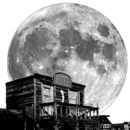
A full moon and saloon figure into the mixture of horror and western in “Full Moon Hill”.
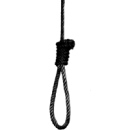
Something awful happens in “The Weak Son”. The questions is what… and who.


November 24, 2013
Abuse and Hatred: Why I won’t watch The Big Bang Theory
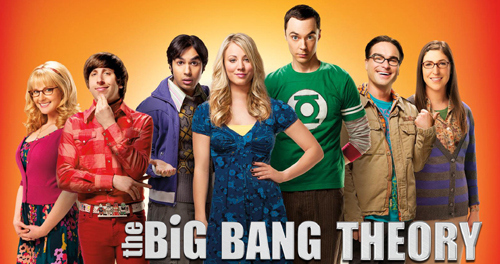
To get it out of the way: This is not a Community versus The Big Bang Theory thing. Yes, I am a huge Community fan, but I watch The Big Bang Theory. One thing I appreciate about the show is it allows characters to laugh when another says something funny. That does more than the distracting laugh track. And I do find some of the dialogue clever.
Moving on…
The Big Bang Theory is hateful
The Big Bang Theory is a show fueled by subtle hatred. What can be hateful about four nerds and the three women in their lives? While many think the four main characters are lovable nerds and the show promotes tolerance and acceptance, they are the butt of jokes and perpetuate the worst stereotypes about a subculture of which I am proud to be a part of.
There’s also K.W. Ramsey’s piece over on The Page of Reviews about The Big Bang Theory As A Tale of Misogynist Redemption. This was written a little over a year ago before Season 6 started. At the time, K.W. had great points, but a lot of what he said has been invalidated, most importantly by last Thursday’s episode using domestic/partner abuse as a punch line.
So, I’m done. But this is not the first time I objected to the content of the show.
Last season’s Valentine’s Day episode
Last season featured an episode taking place on Valentine’s Day. At first, I thought it was a strong episode. When Penny sees a former boyfriend with his girlfriend, a former friend of Penny’s who stole him from Penny, she has a hissy fit, threatening to ruin her dinner with Leonard. But Leonard, in a great moment of character growth, challenges her and risks a fight to make it clear how unreasonable she is being. Leonard showed backbone, stood up for himself and even pulled Penny out of a spiral of self-pity.
In parallel, Raj convinces Stuart to have a party for singles at the comic book shop. There, Raj gives a speech about how the assembled nerds don’t need to feel shame for being alone on a holiday about couples.
Up until this point, I was onboard.
But then, when a woman shows interest in Raj and accepts an invitation to coffee, Raj turns and announces “Later losers!” before walking out.
This completely invalidates everything Raj just said and confirms what Adam Shaftoe-Durrant has said about The Big Bang Theory‘s method of humour:
Establish the stereotype about nerds
Challenge that stereotype
Confirm that stereotype
Raj’s turnabout, played for laughs, seemed like the cool jocks wrote this joke for some unsuspecting nerd. “Say this,” they tell him, “and you’ll be cool like us. Insult the other nerds and you won’t be one any more.”
But in the end, the joke is on the teller and his intended victims.
It was cruel. It was hateful. It confirmed that there is indeed a pecking order. It says if you have a woman or man in your life, you can look down on single people as “losers”.
I stopped watching Season 6 after that.
So this fall I started watching again
I began watching Season 7 earlier this fall. Little had changed from last season so it was easy to follow.
Then last Thursday’s Thanksgiving episode where Sheldon gets drunk with Bernadette’s father. Near the end of the episode, Sheldon slaps Amy on the rear end hard enough to physically move her, then tells her to get some beers. Amy, apparently enjoying the rare physical touch from Sheldon, smiles and moves off camera. The other characters react with stunned silence. To quote Rorshach: “Good joke. Everybody laugh. Roll on snare drum. Curtains.“
Here’s the clip:
The audience laughs, but it’s not funny. It’s abusive.
Now, I know there was an earlier episode where Sheldon puts Amy over his knees and spanks her, but it’s not the same. Sheldon arrives at the idea through comtemplation and Amy enters into it willing since she interprets it as erotic. And the absurdness of it softens the abusive element, but it does suggest their relationship is abusive, but more on that later.
In the Thanksgiving episode, Sheldon was drunk and acting on impulse. So where would he have learned to slap a woman on the rear while giving her a command? His parents.
Descriptions of Sheldon’s parents’ relationship suggest an abusive one. No doubt Sheldon saw his father inflict the same kind of abusive smack on his mother. And now Sheldon has brought it into his relationship with Amy. One could argue Sheldon’s actions are not abusive since he cannot interpret motivation and intent (and he was drunk). He is only mirroring what he saw. I might be willing to accept this premise… except the smack was played for laughs. Even if Sheldon does not understand the inherent violence, the audience—which was cued to find it amusing by the laugh track—should know better.
To put it another way, Chuck Lorre used domestic abuse as a punchline.
But then there is Amy’s reaction to consider.
Amy as an abused partner
Amy’s reaction to turn and grin at Shelon’s action suggests something troubling: she is the victim of an abusive partner.
I’ve wondered why Amy stays with Sheldon. The answer, of course, is this is a TV show and the infinite loop of Amy wanting more intimacy and Sheldon refusing to give it helps with the jokes.
But there is something more sinister here. In relationships where men are the abusers, the women state they remain with these men because:
They believe that deep down the man really loves them.
They believe they can change the man if they work hard enough, love him enough and be patient.
They’re afraid no one else will love them.
While the first concept is debatable, the other two seems very likely.
Earlier in their relationship, Amy was portrayed as the female Sheldon. Since then, she has expressed empathy, sexuality and intimacy. She is a woman capable of a mature relationship (granted, with a patient partner). I had fully expected Amy to wheel on Sheldon and tell him to never touch her like that again. But Amy has been so worn down that she will appreciate any kind of physical attention, even when she would know it is intended to be coercive.
In real life, Bernadette and Penny would be telling Amy to leave Sheldon and find a man who can love her, respect her and cherish her. Being silent only encourages the abuse.
This does not bode well for future episodes. What other abuse must Amy endure from Sheldon to provoke laughter in the audience?
Looking forward to January 2
So, my Thursday nights just freed up until January 2, 2014.
That’s when Community‘s fifth season premieres.


October 31, 2013
Some advice on how to write horror for Halloween (and NaNoWriMo)
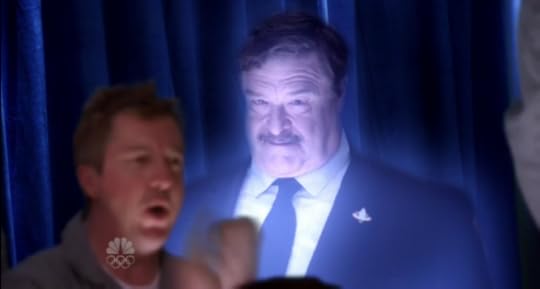
Rest in peace, Vice Dean Laybourne.
I had planned to write a longer post for Halloween, but to quote Vice Dean Laybourne: “I’m going through some stuff right now”.
Since I wanted to post something on this one day where people feel comfortable admitting they enjoy horror and scary stories, here are three blog posts of mine about writing horror:
I deconstruct Glen Hirshberg’s “The Nimble Men” as an example of effective horror writing in Horror Writing: How to Write a Scary Story.
In Creating Tension & Conflict in Fiction: Maslow’s Hierarchy of Needs, I look at how the different layers of human need can be tapped to build tension, create conflict and keep readers on the edge of their seats.
And the title of To Write Horror, You Must Be Horrified sums it up pretty well. If not, if you are going to write horror you have to know what horrifies you and tap into that primal reaction.
If you are gearing up for NaNoWriMo, kicking off tomorrow, I hope these can help you in your mad sprint.
I hope everyone has a scary, but safe, Halloween!


October 8, 2013
Can-Con Wrap-up
Another Can-Con—Ottawa’s local and original SF convention—has come and gone. Without a doubt, Can-Con is going places. Relaunched three years ago at a Travelodge, this year’s event took place in a swanky downtown suite hotel.
Friday I got to the hotel later than I’d planned, but had enough time to check in at the ChiZine Publications‘ table before moderating the “Marketing 101 for Writers” panel with Caroline Frechette, Jean-Louis Trudel and Linda Poitevin. It was a blast and a great way to begin.
Despite wanting to head to the opening cermonies, I went upstairs to chow down on room service while helping to set up for the popularly-demanded ChiZine Publications’ room party.
The party lived up to its demand. I read a bit of “The Pack“, which originally appeared on AE: The Canadian Science Fiction Review and was re-printed in Imaginarium 2013: The Best Canadian Speculative Writing. (Photo of me reading.) But the party got shut down by security sometime in the evening. We quieted down, but a few of us carried on. I left around 1:30 in the morning, but was back up around 8:00.
I caught most of the “How to Pitch Your Book” panel, then went into the “Going Viral: Infection and Disease in Speculative Fiction” panel at 11. This panel was a lot of fun, successfully bridging real world facts with the truth-bending necessary to fiction.
At noon, I read from my short story collection Touch the Sky, Embrace the Dark, took some time at the ChiZine Publications table, and then moderated the “Horror Reading: What is scaring the $#@% out of you?” panel with my buddies Brett Savory and Sean Moreland.
After the panel, I took some time away to have lunch with my con-widow wife at the Royal Oak.
After some more time at the CZP table, I caught the end of the “Cripping the Light Fantastic” panel before sitting on the “Horror Elements of Future Technologies” panel. Then I attended readings by Sandra Kasturi and S.M. Carriere.
Then it was off to dinner with Brett Savory, Sandra Kasturi, CZP Managing Editor Kelsi Morris, Chadwick Ginther and my wife. We went to Som Tum and nearly killed ourselves laughing at the #AddaWordRuinaMovie hashtag. Then it was back to the hotel for the Bundoran room party… which got shutdown by security. So a troop of us headed down to the Royal Oak. Finding it packed for a hockey game, we opted to sit outside and brave the cold weather and threat of rain.
Sunday morning was rough, but gave me the highlight of the convention: presenting the Aurora Award for Best Graphic Novel. It was an honour to represent Can-Con, Ottawa and the CSFFA in presenting in a category I greatly admire. My friend Marie Bilodeau also presented, giving an amusing speech for Best Poem/Song.
The entire Aurora ceremony was well-run by MC Hayden Trenholm, who kept things moving without making it feel rushed. What’s better, he won Best Related Work for his anthology Blood and Water, CZP cover artist Erik Mohr won for Best Artist, and ChiSeries Toronto musician Kari Maaren won for Best Filk.
And though I didn’t win for my short story “Delta Pi” I’m thrilled for my friend Douglas Smith who won with “The Walker of the Shifting Borderland”. And Robert J. Sawyer’s presentation was excellent in stressing how short fiction is its own writing medium, not the junior leagues of novel writers.
After the ceremony, I caught the second half of the “Mystery Plot Form” panel and then helped pack up the ChiZine Publications table. And then, alas, it was over.
Hats off to Derek Künsken for a masterful job with the programming. There was so much to chose from. There are way to many people to name here with whom I chatted, laughed and got caught up. There is a such a deep, rich specfic community here in Ottawa and I am so glad to be a part of it.


September 28, 2013
Can-Con 2013 Schedule
Next weekend, October 4–6, will see Can-Con—Ottawa’s original speculative fiction convention—taking place at the Minto Suite Hotel in downtown Ottawa.
I’ll be attending, sitting on panels, doing a reading, going to parties and hopefully winning an Aurora Award! I’m looking forward to seeing too many people to list here and know the weekend will go to quickly.
If you’re looking for me, my schedule is below.
Otherwise, looking for me at the ChiZine Publications‘ dealer table, at the Royal Oak bar or whatever room parties are going on.
Friday
7PM: Marketing for Writers 101
Matt Moore (m), Caroline Frechette, Jean-Louis Trudel, Linda Poitevin
9PM: ChiZine Room Party
The Ottawa launch of Imaginarium 2012: The Best Canadian Speculative Writing. I will be reading from my short story “The Pack”.
Saturday
11AM: Going Viral: Infection and Disease in Speculative Fiction
Lynne M. MacLean PhD (m), Dr. Rosamund Lewis, Leslie Brown, Wayne Conlan PhD, Cameron McDermaid, Matt Moore
12PM: Reading
I’ll be reading some pieces from my short story collection Touch the Sky, Embrace the Dark.
1PM: Horror Reading: What is scaring the $#@% out of you?
Brett Savory, Matt Moore (m), Sean Moreland
6PM: Horror Elements of Future Technologies
Matt Moore, Geoff Gander, Sean Moreland (m), Suzanne Church
Sunday
11AM: Aurora Banquet and Awards
I am nominated in the Best Short Fiction category for “Delta Pi”.


September 26, 2013
Listen to Marie Bilodeau and I get interviewed on the radio
Marie Bilodeau and I were interviewed on CKCU, the radio station of Carleton University here in Ottawa.
We talk about all kinds of things:
Can-Can, Ottawa’s local science fiction literature convention coming up October 4-6
The Prix Aurora Awards, Canada’s award of speculative fiction, music and fandom
ChiSeries, the reading series taking place in Toronto, Ottawa, Vancouver and Winnipeg
And Canadian speculative fiction
The interview is live online for your listening pleasure!


September 18, 2013
Places to Eat, Drink or Get a Coffee at Can-Con
A challenge I find at conventions is finding where to grab a coffee, get a bite to eat or grab a drink. So since I work downtown near the con hotel, I did some recon to try to point you in the right direction before you arrive.
The first thing to understand is downtown Ottawa tends to shut down outside of working hours and on the weekend, so even if you find something on Google Maps it might not be open. And while I’ve added store hours when I could find them, not everyplace posts its hours.
The hotel itself
The hotel is part of a buidling structure that takes up an entire city block bounded by Lyon (where the entrance to the hotel is), Slater, Kent and Laurier. The hotel’s restuarant is Prime 360, which serves good food, but can be pricey. Also, it is a popular place so might be full of a non-convention crowd.
There is a food court right off the hotel in the centre of the building complex. However, I don’t know if it will be open during the weekend.
Places to get breakfast / coffee
The hotel website says Prime 360 has a breakfast buffet, but I don’t know its cost.
There’s a Starbucks one block north on Kent and a Tim Horton’s on Slater between Kent and Bank.
Places for dinner
About a block south on Lyon is Tapas. I’ve never been there, but heard it’s good. It will be open until 10 on Friday, but only from 5-10 on Saturday.
A few blocks north and east on Albert between Kent and Bank is India Palace. It is open from 5-10 Friday and Saturday. I’ve been there and can highly recommend it.
Just around the corner on Albert is Baton Rouge. Very good food, but pricey. Maybe for a special night out.
Places for a beer
On the other side of the building complex is The Royal Oak, which is a part of a chain of bars in Ottawa. (So, if you enter “royal oak ottawa” into Google Maps you’ll get a lot of hits.) The food is reasonable in price and quality and you don’t have to walk too far! I’m thinking this should be the main bar for the convention.
A few blocks north and west, on Bay between Albert and Queen, is the Bay Street Bistro and the Black Bear. The Bistro is open for lunch and dinner from 11:30AM-10:00PM. The Black Bear is open from 11:00AM-2:00AM. I’ve been to both places a few years back and remember them as having decent food and prices.
What have I missed?
If you live downtown, leave a comment to let me know what places you recommend around the convention hotel (Lyon between Albert and Laurier).


September 3, 2013
I’ll be Reading at ChiSeries Toronto on September 11
I’ll be at ChiSeries Toronto this Wednesday, September 11 along with Caitlin Sweet and Sèphera Girón, plus music by Kari Maaren.
After starting up ChiSeries here in Ottawa, this is my first time reading at the original event, which kicked off in 2010.
The event starts at 8PM and will take place at ROUND in Toronto:
152a Augusta Ave.
Toronto, Ontario
M5T 2L5
If you’re in Toronto, please stop on by!


August 13, 2013
Why You should Vote in the Prix Aurora Awards
[Disclaimer: I'll state this right up front. I have a short story that is eligible for the Aurora Awards and have posted my list of recommendations, but that's not what this post is about.]
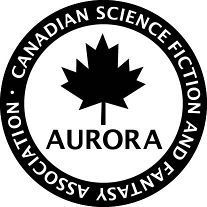 Awards are meant to recognize the best of something. But who determines what “the best” is? For a lot of awards, it is a small cadre of experts/professionals. For others, it’s the members of an organization. I am not knocking these awards, but sometimes you see who won an award and think “Did they read the same thing I did?”
Awards are meant to recognize the best of something. But who determines what “the best” is? For a lot of awards, it is a small cadre of experts/professionals. For others, it’s the members of an organization. I am not knocking these awards, but sometimes you see who won an award and think “Did they read the same thing I did?”
Now imagine an award where every fan has an equal voice in picking the winner. Where everyone gets to say what “the best” is. That is the Prix Aurora Award, which honours the best in Canadian speculative fiction and all Canadians can take part.
The Auroras covers a number of categories, including works of fiction, art and music plus events and publications. These categories are more diverse than the Hugos or Nebulas. Any work by a Canadian is eligible. All Canadians can nominate their favourite works and all Canadians are eligible to vote. (“Canadian” means a Canadian citizen living in Canada or aboard, or a permanent resident of Canada.)
To do this, Canadians register with the Canadian Science Fiction and Fantasy Association (CSFFA). There is a $10 registration fee, but this cost helps cover the creation of the physical awards. As well, CSFFA members receive an electronic voting package containing all the nominated works. Considering how much you might spend on books and ebooks (or, heck, coffee), this is a bargain.
But why take part? I’m going to borrow an idea Tanya Huff presented when she read at the Ottawa ChiSeries in July: We here in Canada fight to have our distinctiveness recognized. Being so close to the U.S., it is easy for us to be viewed by those outside Canada as an extension of the Americans or too small to have a unique voice. To put it simply: no one takes us seriously. But the question Tanya posed (and my apologies if I am mischaracterizing her statement): Why should we be taken seriously when we don’t take the Auroras seriously?
(Back to my own editorial:) In a country of 35 million, only a 190 ballots were cast last year. That’s about the size of a mid-sized convention. (For comparison, in only its second year the Ottawa Comic-Con had 30,000 attendees in a city of 885,000.) One-hundred and ninety is not a lot of voices deciding who “the best” should be.
As fans of speculative fiction, we fight for respect. We hate how dismissive some in the CanLit community are regarding our works. We endure comments from friends and co-workers like “You like sci-fi? Oh, my grandson just LOVES Star Wars!” We’re made to feel abnormal for our excitement over Doctor Who, Firefly, The Wheel of Time series or our steampunk goggles.
A hallmark of our community is that we are passionate and we are active. Like Wil Wheaton said: “It’s not about what you love, it’s about how you love it.” So we should not only appreciate the chance to have a say, we should embrace it.
There is one month left to vote in the Aurora Awards. Show your pride register with the CSFFA. Read the nominated works, post your thoughts and cast your votes. But most of all, spread the word about the Auroras!






